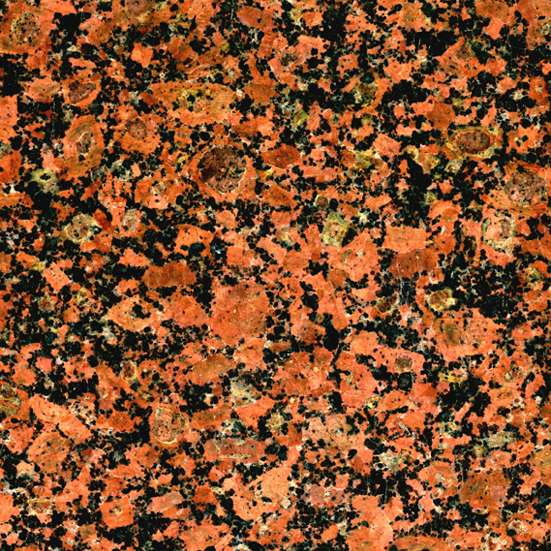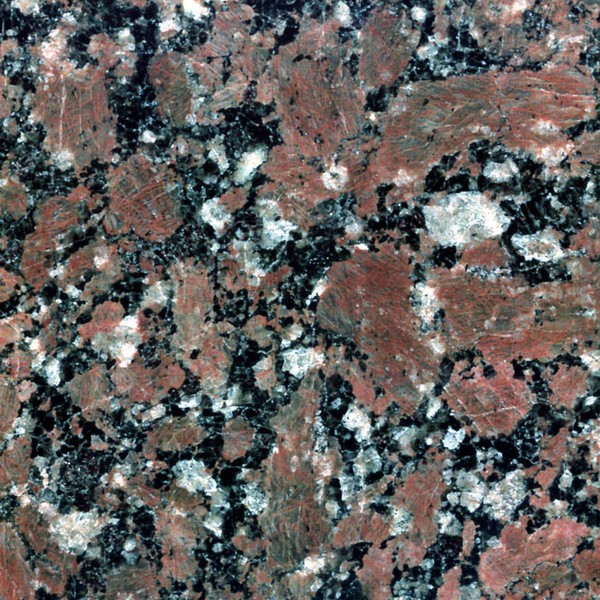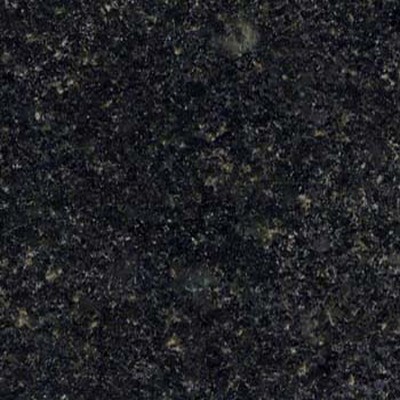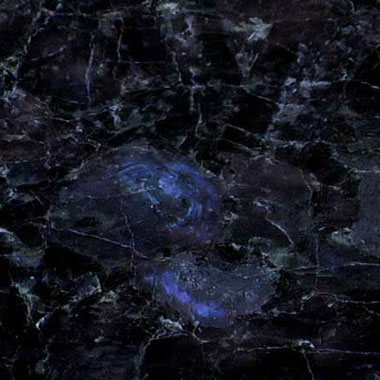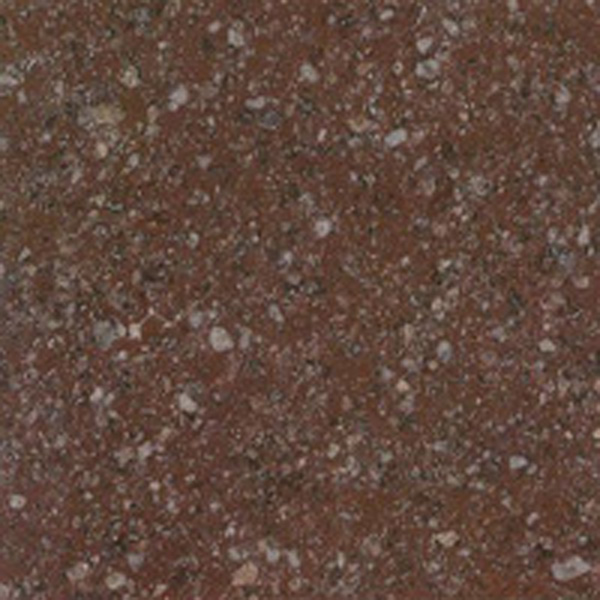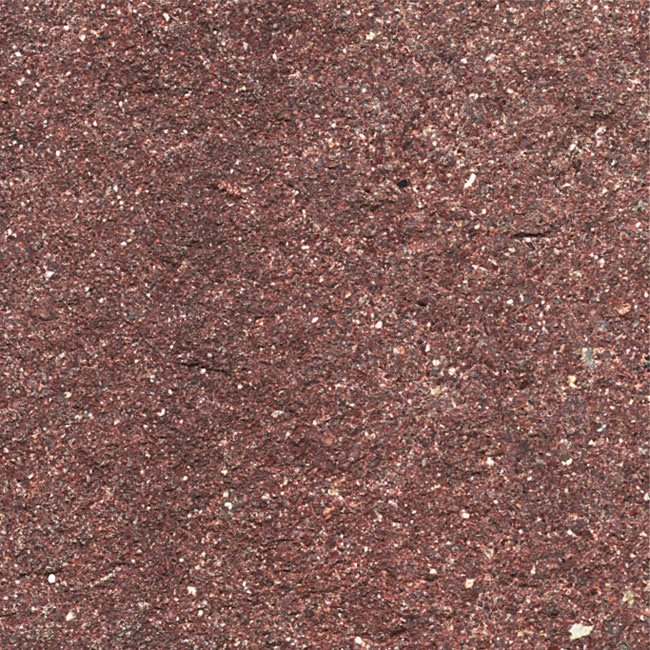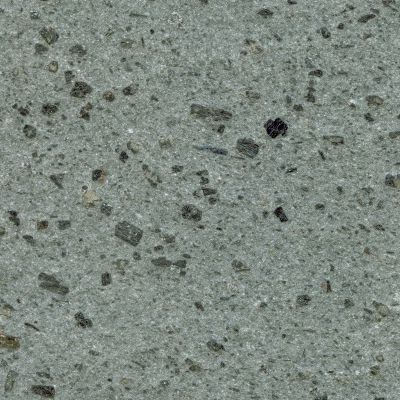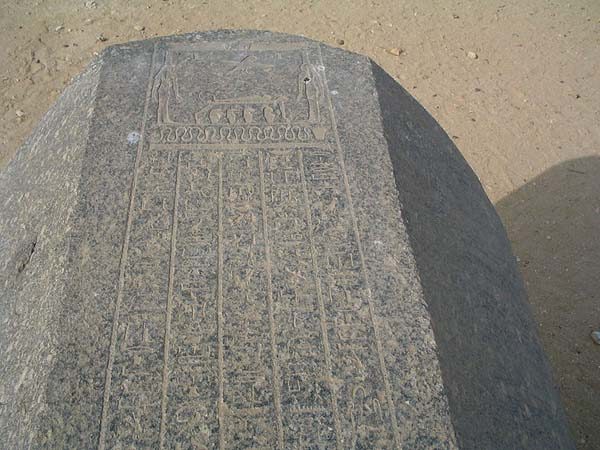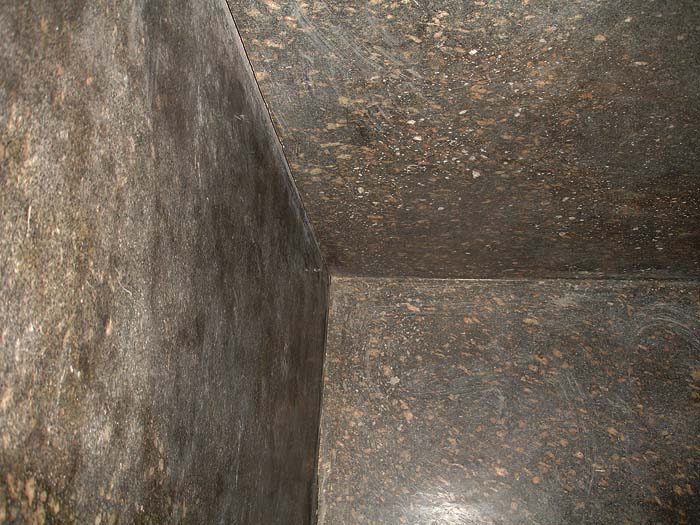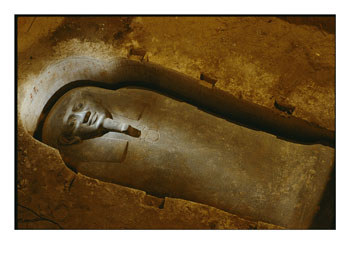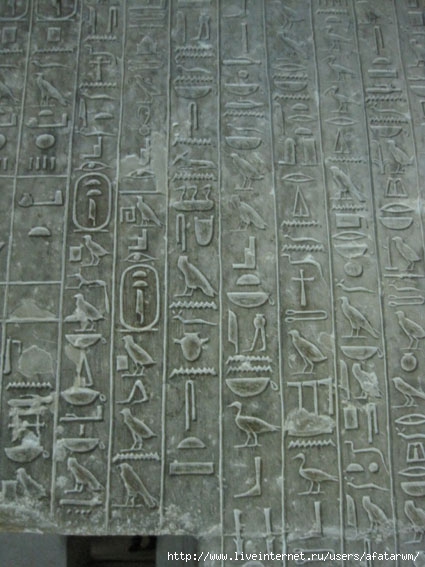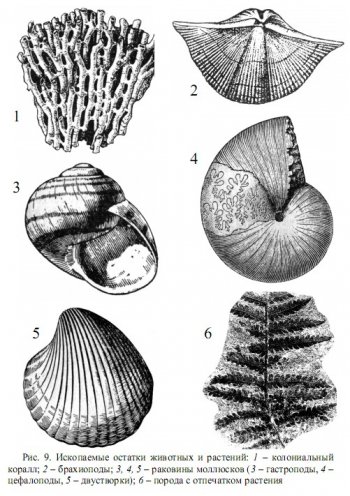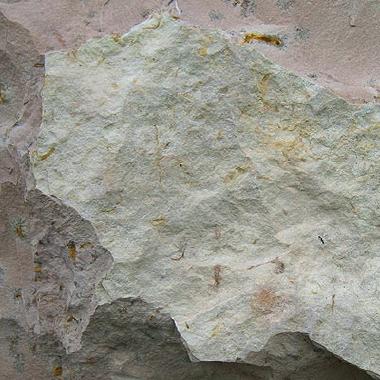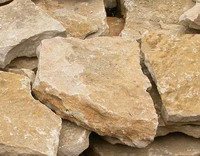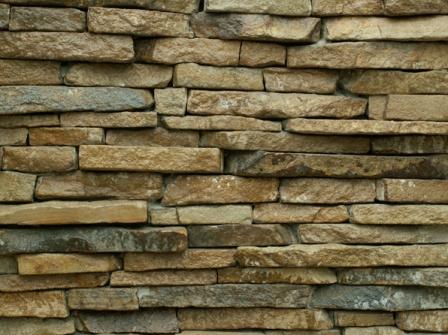Natural material definition. Natural (natural) stone materials
General information
The raw materials for obtaining natural stone materials are rocks. Rocks are significant accumulations of minerals in the earth's crust, formed under the influence of identical conditions.
Minerals are substances that are products of physical and chemical processes occurring in the earth's crust and have a certain chemical composition, uniform structure and characteristic physical properties. Several thousand minerals are known in nature, but only about 50 participate in the formation of rocks; they are called rock-forming minerals. Rocks can consist of one mineral (monomineral) or several (polymineral).
Natural stone materials and products are obtained by mechanical processing of rocks, i.e. crushing, splitting, sawing, chiseling, grinding (crushed stone, slabs, piece stones, architectural and decorative parts) or even without processing (sand, gravel). The properties of the rock from which they are obtained are preserved almost completely. The construction properties of rocks and stone products made from them are largely determined by the chemical composition and physical and mechanical properties of rock-forming minerals.
The properties of rocks are also greatly influenced by their structure (structure), which is predetermined by the conditions of formation of each group of rocks. Therefore, to evaluate properties and determine appropriate processing and application conditions natural materials In building structures, it is necessary to become familiar with the composition and structure of the rocks from which they are obtained. Knowledge of these issues is also important because rocks are also widely used in the building materials industry as raw materials for the production of binders (lime, gypsum, cement), artificial stone materials (ceramic, heat-insulating, concrete, etc.).
The wide range of physical and mechanical properties and the prevalence of natural stone materials have led to their widespread use in construction for various purposes. They are used for the construction of foundations and walls of buildings, protective and decorative cladding of building structures, floors and stairs, as road surfaces, etc. Hundreds of millions of cubic meters of stone materials in the form of sand, gravel and crushed stone are used annually for the manufacture of concrete and foundations during the construction of railway and highways.
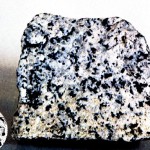 A rock is a mineral mass consisting of one (monomineral rock) or several (polymineral rock) minerals.
A rock is a mineral mass consisting of one (monomineral rock) or several (polymineral rock) minerals.
A mineral is a natural chemically and structurally individualized body that is approximately homogeneous in chemical composition and physical properties - a product of physical and chemical processes occurring in the earth’s crust. Minerals are the constituents of rocks, ores, and other mineral bodies that make up the earth's crust.
Depending on the conditions of formation, all rocks are divided into three types: primary or igneous, secondary or sedimentary and modified or metamorphic.

Formed when magma cooled and solidified.
They were formed as a result of subsequent changes in primary and secondary rocks associated with complex physical and chemical processes occurring in the earth’s crust.
Secondary (stratal) rocks were formed as a result of the destruction of igneous and other rocks under the influence of temperature fluctuations, the action of water and wind. Movable water streams over considerable distances, the products of destruction were deposited in places of less intense water flow and in reservoirs (seas and lakes) in the form of layers. The effects of wind and the movement of glaciers also influenced the movement of destroyed rocks. Water-soluble minerals and the products of their destruction subsequently precipitated from the aqueous solution. The composition of sedimentary rocks also includes minerals and waste products of organisms that inhabited water basins.
Altered rocks were formed as a result of profound changes in igneous and sedimentary rocks under the influence of high temperatures or high pressures. Under the influence of the physicochemical processes occurring under such conditions, the chemical and mineralogical composition of the rocks changed, minerals recrystallized and their structure changed, resulting in the formation of new rocks that differed significantly from the original ones.
This geological classification of rocks is based on the work of academicians F. Yu. Levinson-Lessing, A. P. Karpinsky and other scientists.

Among the wide variety of natural minerals, only a small part of them participates in the formation of rocks. These minerals, called rock-forming minerals, include quartz, feldspars, micas, carbonates, sulfates, and ferromagnesian minerals.
Their construction properties largely depend on the mineralogical composition of rocks. Some minerals are distinguished by high strength, hardness and chemical resistance, for example quartz, others have insignificant strength, insufficient chemical resistance, and are capable of significantly absorbing water (gypsum); individual minerals have the ability to easily split along planes (for example, mica), thereby reducing the strength of the rock in which they form. These properties, as well as the chemical composition of minerals, determine the purpose of the rocks formed by them in construction. Most of minerals are in a solid state and have a predominantly crystalline form.
The main deep rocks used in construction include granite, syenite, labradorite, gabbro and diorite.
Granite- one of the most common rocks in the earth's crust. It is a complex felsic rock consisting of quartz (20-40%), potassium feldspar orthoclase (40-70%) and mica muscovite or more commonly biotite (5-20%). Sometimes granite contains augite or hornblende, replacing mica, then the words hornblende or augite are added to the name of granite, depending on the name of the mineral. Due to the high content of orthoclase, the color of granite is most often gray, bluish-gray, or dark red. The structure of granite (7) is clearly granular-crystalline. The volumetric weight of granite is 2600-2700 kg/m5, the compressive strength ranges from 1000 to 2500 kg/cm2 and higher.
|
|
|
|
|
|
Granit, Ufa |
Red granite, Ukraine |
Emelyanovsky granite, Ukraine, |
Granite from the Kapustinskoye deposit |
Granites containing more quartz and less mica have better construction properties. Based on grain size, granites are divided into fine-, medium- and coarse-grained. Fine-grained granites resist mechanical stress better, wear out more evenly during abrasion, are more resistant to weathering, and crack less when heated than medium- and coarse-grained granites. Due to low porosity and low water absorption (usually 0.9%), granites are frost-resistant and can withstand up to 200 or more freezing and thawing cycles.
Granites are well processed - trimmed, ground and polished. They are used primarily for external cladding of buildings and structures, especially public and hydraulic ones.
Syenite differs from granite in that it does not contain quartz, therefore the total content of SiC>2 in it is less than in granite. Externally, syenite resembles granites, but its grain structure is less clearly expressed and its color is darker. In terms of strength, syenite is very close to granite, but is less resistant to weathering. Syenites are much less common than granites. Their deposits are located in the Urals.
Diorite- granular massive rock - consists of almost 75% feldspars (plagioclases), also contains hornblende, augite and biotite, sometimes quartz (this diorite is called quartz). The color of diorite is gray or dark green, volumetric weight is 2800-3000 kg/m3, compressive strength is 1500-2800 kg/cm2. Diorite has high viscosity, is well polished and is resistant to weathering (the latter sharply decreases in the presence of pyrite inclusions). Diorite is used mainly for road surfaces and cladding.
|
|
Gabbro--main rock - consists of feldspars (up to 50%, anorthite predominates), augite and olivine. The structure of gabbro granite is predominantly coarse-grained, the color is gray, dark greenish, brown-green or black, volumetric weight is 2900-3300 kg/m3, compressive strength is from 2000 to 3500 kg/cm2. Gabbro is used for coatings, roads, cladding and for the preparation of crushed stone.
|
|
Labradorite- a rock from the gabbro family, an essential component of which is the mineral Labradorite, which has its characteristic iridescence - bright tints of colors: blue, light blue, green, golden, etc. Labradorite is widely used in construction as a facing stone.
|
|
|
The main erupted rocks
Porphyry are divided into quartz porphyry - an analogue of granite, quartz-free porphyry - an analogue of syenite and porphyrite - an analogue of diorite. The structural properties of porphyries are close to the properties of deep-seated rocks, but due to the unevenness of the structure and the presence of “phenocrysts” (usually large grains of feldspar), their resistance to weathering is lower and the upper layers in deposits are often weathered. Porphyries resist abrasion much weaker than deep rocks.
|
|
|
Diabase(analogue of gabbro) - a rock with grains of different sizes, dark gray or greenish-black, having high strength (up to 4500 kg/cm2). It has high viscosity and relatively low abrasion and is therefore used as a material for covering roads of various types, as well as as a raw material for stone casting.
The newest rocks erupted include trachyte, andesite and basalt.
Trachyte(analogous to syenite) is a porous rock: volumetric weight is about 2200 kg/m3, compressive strength is 500-900 kg/cm2, color is often light yellowish or gray. In construction it is used as a wall material and as a filler (crushed stone) for concrete. Trachyte will wear heavily when abraded, and its resistance to weathering is low. In the Caucasus there is a type of trachyte - eshtaunite, often used as a filler for acid-resistant concrete.
Andesite(analogous to diorite) is a gray rock with a bulk weight from 2200 to 2700 kg/m3 and a compressive strength from 600 to 2400 kg/cm2. More acidic and dense andesites are used as acid-resistant material in the form of facing slabs and crushed stone for acid-resistant concrete. Some andesites are porous. They differ greatly from trachytes in their high content of dark-colored minerals.
|
|
Basalt(analogous to gabbro) is the most common eruptive (volcanic lava) rock. Depending on the heating conditions, the structure of basalt is glassy or cryptocrystalline. Its volumetric weight is close to its specific weight (2900-3300 kg/m3), its compressive strength reaches 5000 kg/cm2. In the presence of cracks and pores, the strength of basalt is greatly reduced, sometimes up to 1000 kg/cm2.
The great hardness and fragility of basalts makes processing difficult; they are used mainly as a material for road surfaces, for paving embankment slopes, as crushed stone for concrete, and also as a raw material for casting. Fused basalt has very high strength (up to 8000 kg/cm2) and is used for the manufacture of acid-resistant chemical equipment, pipes, facing materials, etc. Basalt deposits are available in the Far East, the Caucasus and other places.
Basalts are so difficult to process that the biggest mystery is still not even Egyptian pyramids, and perfectly crafted basalt sarcophagi in the Valley of the Kings.
|
|
|
|
|
|
In addition to the massive rocks mentioned above, igneous rocks include clastic rocks - a product of redeposition and cementation of loose material ejected by volcanoes; They are divided into loose - volcanic ash, sand, pumice and cemented - volcanic tuffs, tracks, tuff lava.
Volcanic ash called irregularly shaped powdery particles of volcanic lava ejected in a crushed state; larger particles are called volcanic sands.
 Pumice- a very porous rock (up to 80% of the volume is occupied by pores). This is volcanic glass, which was formed during the rapid cooling of lava in air, accompanied by the rapid release of gases from it. The particle size of pumice is from 5 to 30 mm, the average volumetric weight (in bulk) is about 500 kg/m3.
Pumice- a very porous rock (up to 80% of the volume is occupied by pores). This is volcanic glass, which was formed during the rapid cooling of lava in air, accompanied by the rapid release of gases from it. The particle size of pumice is from 5 to 30 mm, the average volumetric weight (in bulk) is about 500 kg/m3.
Due to the presence of rather large and closed pores, the water absorption of pumice is significantly lower than its porosity. Pumice is frost-resistant and non-hygroscopic. It has a low thermal conductivity coefficient (0.12-0.2 kcal/m-h-deg), therefore it is a good thermal insulation material; compressive strength 20-30 kg/cm2. Pumice and pumice sands are used in the form of crushed stone and sand for the preparation of lightweight concrete and in the form of powder for thermal insulation, as well as as a grinding (abrasive) material. Pumice and other porous volcanic rocks are mined in Armenia, as well as in the North Caucasus, Kamchatka and other regions of Russia
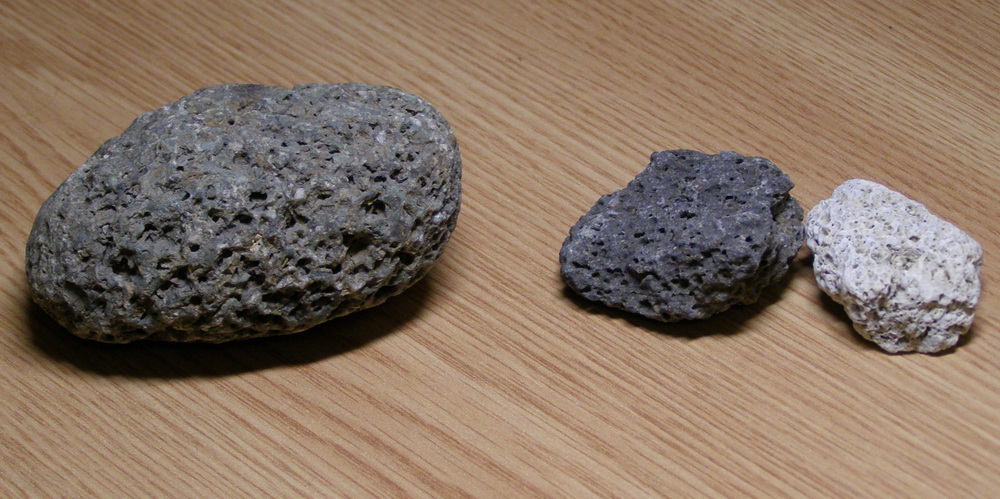 Volcanic tuffs- porous rocks resulting from the compaction of volcanic ash; their degree of compaction varies greatly depending on the conditions of occurrence. The most compacted volcanic tuffs include tracks. Tuffs, traces and pumice are used in finely ground form, like volcanic ash, as hydraulic additives to mineral binders (lime, cement).
Volcanic tuffs- porous rocks resulting from the compaction of volcanic ash; their degree of compaction varies greatly depending on the conditions of occurrence. The most compacted volcanic tuffs include tracks. Tuffs, traces and pumice are used in finely ground form, like volcanic ash, as hydraulic additives to mineral binders (lime, cement).
Tuff lava is formed when volcanic ash and sand enter molten lava before it cools. Tuff has a bulk weight of 750-1400 kg/m3, a compressive strength of 60-100 kg/cm2 and higher, a thermal conductivity coefficient (on average) of 0.3 kcal/m-h-deg, and a pinkish-violet color of various shades. Tuff has high frost resistance. Regularly shaped stones are cut from tuff rock for laying walls, and crushed stone is used as a coarse aggregate for lightweight concrete
The starting material for the formation of sedimentary rocks is the destruction products of rocks of various origins.
Rocks are destroyed by weathering. The most important factors in weathering are water, wind and temperature changes. Water penetrates into cracks, gradually erodes and dissolves the constituent parts of rocks, and when frozen, due to an increase in volume, destroys them. As a result of sudden temperature changes, the solidity of the rocks is disrupted, they crack and pieces of different sizes are separated from them. The wind blows and carries away particles of destroyed rocks, carving depressions (niches) into them. Destruction products are carried by wind over long distances.
Weathering manifests itself not only in the form of physical processes (mechanical destruction), but also as a result of the interaction of the constituent parts of rocks with various substances in the atmosphere (chemical destruction). Thus, feldspars (for example, orthoclase) are destroyed under the influence of water and carbon dioxide, forming the mineral kaolinite (this process is called kaolinization):
K2O A12O3 6SiO2 + 2H2O + CO2 = K2CO3 + 4SiO2 + A12O3 2SiO2 2H2O.
(orthoclase) => (potash) => (kaolinite)
As a result of physical weathering of rocks, large pieces (fragments) are formed - blocks, gruss, smaller (planed) pieces - crushed stone (natural) and small grains - sand, mainly quartz. The result of chemical destruction of feldspathic rocks is the formation of kaolinite, which, when mixed with sand and other destruction products, produces a variety of clays. These destruction products remain in place, forming mountain sand and primary clay, or are transported by water, glaciers, wind and deposited in other places (in the form of secondary clays).
Sedimentation and accumulation of destruction products leads to the formation of sedimentary rocks, which, depending on the conditions of formation, are divided into the following main groups: clastic (mechanical sediments), chemical origin (chemical sediments) and organogenic, resulting from the vital activity and death of organisms inhabiting water basins. A feature of sedimentary rocks is their layering - the result of the gradual deposition of destruction products. Sedimentary rocks occur in the form of layers, which is why they are also called strata.
Clastic rocks
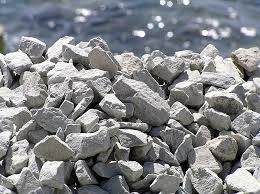 Clastic rocks (loose) are divided according to the size of the fragments into coarse clastic - piece size more than 2 mm (gravel with rounded grains and large sands), medium clastic - piece size 2-0.1 mm (sands), fine clastic - grain size 0.1-0 .01 mm (silt particles) and fine clastic - grain size less than 0.01 mm (clays - earthy polymineral mixtures, fine silt - deposits deposited by water, loess - deposits deposited by the wind, consisting of tiny grains of quartz, limestone, clay).
Clastic rocks (loose) are divided according to the size of the fragments into coarse clastic - piece size more than 2 mm (gravel with rounded grains and large sands), medium clastic - piece size 2-0.1 mm (sands), fine clastic - grain size 0.1-0 .01 mm (silt particles) and fine clastic - grain size less than 0.01 mm (clays - earthy polymineral mixtures, fine silt - deposits deposited by water, loess - deposits deposited by the wind, consisting of tiny grains of quartz, limestone, clay).
Clastic rocks bound together by some substance (clay, calcite, silica, etc.) are called cemented rocks. Of these, sandstones (8), i.e., cemented quartz sands, are of greatest importance in construction.
Depending on the cementing substance, sandstones are distinguished as clayey, marly, calcareous, siliceous, bituminous, etc. Sandstones are colored by cementing substances. Siliceous and calcareous sandstones are most often used for construction; the former are cemented by silica, the latter by calcite. The most resistant and durable are siliceous sandstones, having a compressive strength of up to 2500 kg/cm2.
The large volumetric weight (up to 2700 kg/m3) and the high coefficient of thermal conductivity of sandstones make it possible to use them only for the walls of unheated buildings, foundations, retaining walls, embankments, for constructing steps and sidewalks, and especially resistant ones - for cladding buildings and structures (bridge supports and etc.). Sandstones are also used in the form of crushed stone and rubble; crushed stone is used for the preparation of concrete (as a coarse aggregate), for the construction of highways, ballasting of railway tracks and other purposes. Sandstones are very widespread.
Organogenic rocks
|
|
|
Organogenic rocks are formed as a result of the vital activity and death of organisms found in marine and fresh waters. Organogenic rocks include various carbonate and siliceous rocks.
For construction purposes, limestones, shell limestones, chalk (in which the main substance is calcite) and diatomites and tripoli (in which the main substance is aqueous silica) are used.
Limestones consist mainly of calcite CaCO3. They were formed in sea basins mainly from the remains of the animal world (zoogenic rocks), and also partly due to chemical precipitation (due to the precipitation of calcium carbonate from solution). Loose accumulations of shells and their fragments were compacted by water pressure and held together by calcium carbonate into a more or less dense rock.
Limestones have a hardness of about 3 on the hardness scale. With a large admixture of silica, their hardness and strength increase, which makes processing difficult. The volumetric weight of limestone is 1700-2600 kg/m3, they are white or, depending on impurities (clay, quartz, iron oxide, etc.) yellowish, grayish, reddish, brown, etc. The high content of clay and pyrite in limestones has a harmful effect on them. Thus, with a clay content of more than 3%, limestones become moisture-intensive and insufficiently frost-resistant.
|
|
|
|
Depending on the relative content of CaCO3, limestones are called pure (at least 98% CaCO3) and marly (at least 90% CaCO3).
Marls They are a natural thin mechanical mixture of limestone and clay in different proportions, their structure is earthy to dense, their strength is low, and they weather easily. When the CaCO3 content is at least 75%, marls are called calcareous, at least 40% are simply marls, and at least 10% are clayey marls; marls of a certain composition are used for... production of Portland cement.
The compressive strength of limestone ranges from 80 to 2000 kg/cm2, depending on density and composition. They usually occur in layers separated by layers of clayey-loamy and sandy rocks.
Marble-like limestones They are transitional rocks from limestone to marble. In them, under a microscope, crystalline grains of lime spar (calcite) are visible among a mass of uniform density.
 Limestone is dense used in the form of processed slabs and shaped parts for wall cladding, the manufacture of stair steps, window sills, plinths and cornices; Irregularly shaped slabs are used for rubble masonry. Limestone is also used to prepare crushed stone for concrete, in the production of Portland cement, lime is produced from it by firing, etc.
Limestone is dense used in the form of processed slabs and shaped parts for wall cladding, the manufacture of stair steps, window sills, plinths and cornices; Irregularly shaped slabs are used for rubble masonry. Limestone is also used to prepare crushed stone for concrete, in the production of Portland cement, lime is produced from it by firing, etc.
Porous limestones and limestone-shell rock can be easily sawed into piece stone of certain sizes and used for laying walls and partitions. Limestone-shell rock (in which fragments of shells are visible) is widespread in the North Caucasus. Many houses here are built from this material. The volumetric weight of limestone-shell rock is from 600 to 1500 kg/m3, the compressive strength is from 4 to 50 kg/cm2.
Chalk has the same chemical composition as limestone CaCO3, it consists of small particles of shells of protozoan organisms; its strength is less than that of limestone. Chalk is used to produce lime, prepare paints, putties, etc., as well as in the production of cement.
 Diatomites And tripoli They are rich in amorphous silica, weakly or completely uncemented, loose or earthy masses of white, yellow, gray, pink color. Diatomites are formed from the shells of diatoms that live in fresh and salt water. After the plants die, the shells sink to the bottom of reservoirs, become compacted, and the finest silt and clay settle between them.
Diatomites And tripoli They are rich in amorphous silica, weakly or completely uncemented, loose or earthy masses of white, yellow, gray, pink color. Diatomites are formed from the shells of diatoms that live in fresh and salt water. After the plants die, the shells sink to the bottom of reservoirs, become compacted, and the finest silt and clay settle between them.
Tripol is a rock of earlier origin in which the shells have turned into tiny balls of opal, cemented with opal cement.
Diatomite and tripoli of the highest grades contain from 75 to 96% SiO2. Their chemical composition and physical properties are very similar: volumetric weight from 350 to 950 kg/m3, thermal conductivity coefficient 0.15-0.2 kcal/m h deg. Diatomite and tripoli are widely used as thermal insulation materials and as active hydraulic additives to binders.
Over time, under the pressure of the overlying layers, tripoli turns into a dense, strong, difficult-to-wet opoka rock, almost entirely consisting of amorphous silica.
Rocks of chemical origin
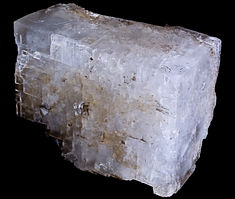 Magnesite- a common mineral, magnesium carbonate MgCO3. Name from the region of Magnesia (Thessaly, Greece), where it was first discovered; known since ancient times.
Magnesite- a common mineral, magnesium carbonate MgCO3. Name from the region of Magnesia (Thessaly, Greece), where it was first discovered; known since ancient times.
Used to produce refractory materials and magnesium binder - caustic magnesite. The richest deposits of magnesite are found in the Urals.
Crystals are rare. Usually dense aggregates of varying grain sizes, up to porcelain-like. Porcelain-like magnesite often contains impurities of opal and magnesium silicates. Fragile. The hardness of porcelain is 4-4.5 - up to 7 (due to the fine admixture of opal). The color is white, gray, less often yellowish. It is found in hydrothermal deposits or as a product of weathering of ultramafic rocks.
Dolomite consists mainly of the mineral of the same name CaCO3* MgCO3. The properties of dolomites are close to dense limestones, and sometimes they have even more high qualities. They are used as building stone and crushed stone for concrete, as well as for the production of fire-resistant materials and binders (caustic dolomite). Dolomites are widespread in Russia.
Gypsum CaSO4'2HoO, consisting of the mineral of the same name, is used mainly for the manufacture of gypsum binders and as an additive in the production of Portland cement.
Anhydrite CaSO4, consisting of a mineral of the same name, is used to produce binders, as well as to make slabs for interior cladding. Externally, anhydrite does not differ noticeably from gypsum and usually occurs together with it.
Calcareous tuffs formed as a result of the precipitation of CaCO3 from cold and hot underground carbon dioxide waters. Very porous calcareous tuffs are used as a material for decorative buildings (grottoes, etc.) and as a raw material for the preparation of lime, and dense ones with small evenly spaced pores and a compressive strength of up to 800 kg/cm2 are used for the external cladding of buildings.
From metamorphic rocks Gneisses, marbles, quartzite and shales are used in construction.
Gneisses in mineralogical composition they are similar to granites, from which they were formed as a result of recrystallization under high pressure. Gneisses have a so-called schistose structure, characterized by the fact that the constituent minerals are elongated in a direction perpendicular to the direction of pressure. In terms of volumetric weight and strength in the direction perpendicular to foliation, gneisses differ little from granites. Foliation makes gneisses easier to mine and process, but reduces their strength along the layers.
Gneisses split relatively easily along foliation planes and can delaminate during alternating freezing and thawing. Foliation reduces the resistance of gneisses to weathering. The purpose of gneisses in construction is basically the same as that of granites, but they are used mainly in the form of slabs for lining canals and embankments, laying foundations, constructing sidewalks, etc.
Shales- a hard clayey rock of schistose composition, obtained from clays that have been highly compacted and partially recrystallized under the influence of high pressure.
Clay shales are much harder than clays, do not soak in water, and when mixed with it do not transform into a plastic state. They consist of very small clay particles, as well as mica leaves, fine dust, feldspars, quartz grains and other minerals; the color is predominantly dark gray; easily split into thin, even tiles, used as the most durable roofing material, known as natural slate.
At the initial stage of its formation, our planet consisted of rocks, water, fire, and was formed among the roar of volcanoes, flashing lightning and constant collisions with each other lithospheric plates. The mountains, creeping over each other, destroyed, crumbled and mercilessly maimed each other, as a result of which small and large stones broke off from young rocks and rolled down, destroying everything in their path.
Over time, the planet began to slowly calm down, but the process of crushing rocks has not yet been completed: the earth periodically shakes, crushing rocks and grinding them into small and large stones.
Natural stones are hard pieces of rock that appear as a result of crushing. In their structure, texture and composition, they are very different from each other, and therefore there are extremely many types of them: marble, granite, limestone, as well as slates, shell rock, basalt.
Some of them were formed on land, others - under the influence of fresh or sea water. For example, some blocks were formed thanks to mollusks that, dying, sank to the bottom, covering it with shells and shells. Over time, the layer became thicker, denser and after some time collapsed, unable to withstand its own weight, as a result of which shell particles mixed and formed lumps.
Natural stones are the remains of:
- Destroyed sedimentary rocks (75%), which were formed as a result of various erosion processes, primarily weathering and destruction of rocks, mechanical or physical loss of sediment from water, and the vital activity of organisms. Among the most famous names stones - limestone (a natural white stone consisting of calcium carbonate), sandstone (consisting of quartz particles) and marble - a natural stone that appeared during the transformation of limestone and dolomite;
- Metamorphic rocks (about 20%) are igneous and sedimentary rocks that were formed inside the planet and changed under the influence of various physical and chemical processes, primarily the pressure of aqueous and gas solutions and high temperature. The most famous natural stone of this type is quartzite, consisting of mica and quartz;
- Igneous rocks that were thrown out by volcanoes from the bowels of the Earth. The most famous type is granite - one of the hardest, most durable and dense rocks. The color of this stone is extremely varied: gray, red, brown, green.
Mining process
Natural stone is mined everywhere and on all continents. Typically, transportation is not cheap (the cost is influenced not only by the quality of the rock, but also by the method of extraction and transportation costs: when extracting stones from the Earth, it is very important to preserve the appearance of the rock).
Since natural stones have different strength and hardness, different methods and equipment are used to extract them.
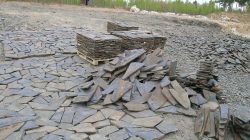
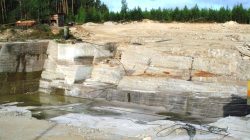
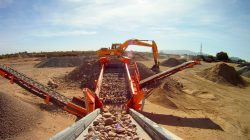
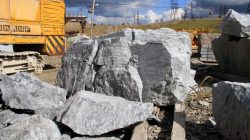



To do this, the deposit is opened up, creating a vertical shaft leading into the quarry. Many countries use the drill-and-blast method and the air cushion method: using drills, they make a hole, lay a charge, or pump in air.
As a result, the rock falls into pieces (even though these methods are cheap, the valuable properties of the rock are lost because it is heavily crushed, which leads to significant losses of raw materials). A more expensive, albeit effective method is the stone-cutting method: it allows you to extract natural stone without much loss.
Dimensions
Natural stones come in different sizes: the largest stone is a rock (formed after a mountain with a large number of cracks is destroyed), followed by blocks, blocks, monoliths and smaller pebbles. Those used in construction can be both small in size and real giants: a large stone often has dimensions exceeding 10 cubic meters (these monoliths are especially valuable due to the difficulty of extraction and transportation). Large stones that do not have cracks are divided into:
- Blocks are large rectangular stones, the size of which exceeds ten cubic meters, they are used when laying foundations, cyclopean masonry, and in monumental monuments;
- Monumental - from 5 to 10 m3, monuments, sculptures, ceilings are made from it;
- Unique - size 2x1x1.5 m, monuments, sculptures, columns are created from it;
- Piece - the size exceeds 1 m3, they make quads, sculptures, vases, bowls, as well as blocks, cobblestones, and natural stone borders.
The size classification does not end there, for example, the height of boulders ranges from 20 cm to 10 m, crushed stone ranges from 5 to 15 cm, pebbles range from 1 to 10 cm, and thin plates are considered the smallest (they are used for cladding, in mosaics and stained glass) – from 1 to 10 mm.
Rock hardness
Another important characteristic of natural stone materials is such properties as their strength and durability, that is, the ability to maintain their qualities regardless of external influences. According to this indicator, natural stones are divided into:
- Highly durable - they begin to collapse after six hundred years, these include quartzites and fine-grained granites;
- Durable - begin to crumble after two centuries (coarse-grained granites);
- Relatively durable - destruction begins after a hundred years (white marble, dense limestone, dolomite);
- Short-lived - they begin to crumble after a quarter of a century (colored marble, porous limestone, gypsum).


![]()
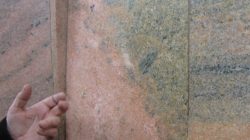
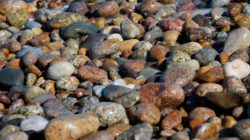
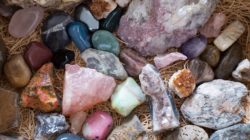

When characterizing a rock, its structure is also taken into account: the size and shape of mineral grains, the degree of crystallization, granularity (how evenly distributed the mineral grains are and whether there are voids). For example, in order to find out which stone is more durable, just look at its components: a fine-grained structure is stronger than a rock with large grains or an uneven structure.
A large stone, the grain structure of which is uneven, is poorly resistant to environmental influences: different grain sizes of minerals when changing temperature regime expand in different ways, causing large stones to crack, and if water gets into the cracks, natural stones continue to break down.
Facing materials
If in former times large stone was often used for the construction of grandiose, durable structures (for example, pyramids), now it is more used as a facing material, decorating palaces, temples, estates, and ordinary houses: natural stone is wear-resistant, frost-resistant and practically does not absorb water.
Naturally, such a natural stone must be easy to process, taking the desired shape, and must also be beautiful (for this reason, not every type is suitable for cladding).
In this case, such properties of stones as pattern, texture and color of the stone play an important role. It is worth noting that each piece has a unique pattern, and therefore in nature there are hardly two identical blocks. This happened because they are different combinations and mixtures of crystalline mineral grains of different composition, including inclusions of organic and inorganic residues.
In order to achieve the desired look, facing materials can be processed (the processing method depends on the grain size and color). Facing stone is an expensive material due to the fact that during the extraction process all its properties must be preserved, therefore, the costs of both extraction and processing are considerable (and this despite the fact that the natural facing stone lies shallow).
They extract it carefully, in blocks, doing everything possible so that cracks do not appear. When extracting, the most expensive method is used: the rock is cut with stone-cutting machines or, if it is very easily destroyed, they use the thermal jet method, cutting blocks from the massif using thermal cutters, after which they are given the desired shape.
2. NATURAL STONE MATERIALS
Natural stone building materials are materials obtained from unprocessed rocks, or from rocks that have undergone mechanical processing such as splitting, sawing, hewing, grinding, polishing, crushing followed by sieving, etc., but without prior thermal or chemical treatment .
Rocks are natural accumulations of mineral masses consisting of one (monomineral rocks) or several (polymineral) minerals. Mineral (from Latin minera - ore) is a natural body, approximately homogeneous in chemical composition and physical properties, formed as a result of various physical and chemical processes occurring in the earth's crust. Each mineral has a specific chemical composition and characteristic physical and mechanical properties.
Based on their origin, rocks are divided into three groups: igneous or igneous (primary), sedimentary (secondary) and metamorphic (from the Greek metaforfo - to transform).
Igneous rocks were formed as a result of the cooling of a fiery liquid mass - magma, which tore apart the earth's crust and spilled onto its surface. Depending on the cooling conditions of the magma, igneous rocks are divided into deep (intrusive) and eruptive (effusive).
Deep rocks(granites, syenites, diorites, etc.) were formed as a result of the slow cooling of magma in the thickness earth's crust under significant pressure from the upper layers. Under such conditions, rocks acquired a uniform crystalline structure as a result of the fact that large grains of various minerals firmly fused together.
Erupted rocks(basalts, andesites, diabases, etc.) were formed during the rapid cooling of magma on the surface of the earth. Under such conditions, complete crystallization of the cooling magma did not occur. Depending on the conditions of formation, the erupted rocks have a fine-grained, cryptocrystalline or amorphous structure. If gaseous products were slowly released from the viscous magma, a porous or pumice-like structure was formed. In addition, igneous rocks include clastic rocks, which were formed from tiny particles of crushed lava thrown to the surface of the earth during volcanic eruptions. These deposits remained in a loose state (volcanic ash, pumice) or, in the presence of natural cementing substances and under the pressure of the overlying layers, turned into dense cemented rocks (volcanic tuff).
Sedimentary rocks formed as a result of destruction (weathering) of igneous (primary) and other rocks under the influence of external conditions or as a result of the deposition of substances from any environment. Based on the nature of formation and composition, sedimentary rocks are divided into clastic rocks (mechanical sediments), clayey rocks, as well as chemo- and organogenic rocks.
Clastic rocks(mechanical sediments) - coarse products of mechanical destruction of igneous and other rocks under the influence of sudden changes in temperature, exposure to water and wind (breccias, conglomerates, sands, etc.). They are a loose mixture consisting of individual grains of destroyed primary rock; in a number of cases, loose mixtures were subjected to cementation with various natural substances, thereby forming solid rocks.
Clay rocks– dispersed products of deep chemical transformation of silicate and aluminosilicate minerals of parent rocks, transformed into new mineral species.
Chemical precipitation– chemogenic rocks formed during precipitation of mineral substances from aqueous solutions with their subsequent compaction and cementation (dolomite, magnesite, etc.).
Organogenic rocks formed as a result of the deposition of the remains of living (zoogenic) and plant (phytogenic) organisms, the skeletons and shells of which contained minerals. Such deposits, as a rule, were subjected to compaction and cementation (limestone, chalk, etc.).
Metamorphic, or modified, rocks formed in the thickness of the earth's crust as a result of significant modification of sedimentary or igneous rocks under the influence of high temperature, high pressure and other factors. Under these conditions, minerals recrystallized without melting, which contributed to an increase in the density of the resulting rocks compared to the original ones. As a rule, metamorphic rocks have a schistose structure, but sometimes they can retain the structure of primary rocks.
For natural stone materials, their petrographic characteristics, which makes it possible not only to establish the type of rock and make preliminary judgments about its quality, but also supplements the results of laboratory tests with such important data as color, degree of homogeneity and weathering of the rock, structure, composition, pattern characteristics, nature of the split, surface properties and etc.
To compile a petrographic characteristic, they usually use a hammer, a steel needle, a magnifying glass, a hardness scale, a ruler with millimeter divisions and a 10% solution of hydrochloric acid. In this case, a large piece of rock is selected from the average sample, which most fully reflects all the characteristic features of this breed. Mainly pay attention to the following characteristics.
Size and shape of pieces very diverse. The selected piece of rock is measured in three linear dimensions and thus its shape is determined - it can be regular or irregular, cuboid, plate-shaped, parallelepiped, rhombic, spherical, etc.
The shapes of rock samples help determine the possibility of obtaining a particular type of stone material.
Color The composition of rocks depends on their mineralogical composition, impurities and degree of weathering. Typically, rocks are divided by color into six groups: white (almost colorless), yellow to red, green, blue to violet, dark gray to black, multicolored (variegated).
Limestones and gypsums usually have a white color; the presence of clay and impurities in them gives the rock yellow and brown shades. Granites and syenites are usually characterized by a gray or red color; darker shades of these colors indicate the presence of mica-biotite in the rock. When describing color, the presence of colored spots, veins, etc. is noted.
Shine The individual minerals that make up a rock are characterized by the freshness of the rock and its pattern. Conventionally, a distinction is made between bright (glassy), pearlescent (rainbow-colored), greasy, dull (shimmering) and matte (no shine). A glassy luster is usually characteristic of quartz, a pearlescent luster is characteristic of mica, and a greasy luster is characteristic of talc. The faded, dull appearance of minerals with rusty tones indicates great weathering of the rock.
The color of the rock, its uniformity and luster make it possible to determine the types of minerals that make up the rock.
Mineralogical composition rocks are determined by the external characteristics of the main minerals that make up the rock, by the size of their inclusions and uniformity of distribution, as well as by the type of cementing substance and its location.
Structure rocks are determined by examining a fresh fracture; it can be crystalline dense and granular, with different crystal sizes (fine-, medium-, coarse- and coarse-grained) - granite, syenite, fluorite, etc.; porphyried - for porphyries; glassy - in obsidians; oolitic - in limestones, granular - in sandstones.
Texture (addition) The rock and its homogeneity are also determined by a fresh fracture of the rock. It can be dense - slatey, scaly and fibrous in composition or porous - cellular, perforated and earthy in composition, with small or large pores. At the same time, the presence of fracturing, the size and direction of the cracks, as well as the presence of various inclusions in the rock are determined.
Cleavage- this property characterizes the ability of some crystalline minerals to split along certain smooth planes upon impact, the latter are called cleavage planes.
Different minerals have different cleavages: very perfect cleavage - minerals that are easily split (for example, mica exfoliates into thin sheets in one direction); perfect cleavage - minerals split along certain planes, forming smooth and shiny surfaces (for example, calcite has cleavage in three directions, and feldspars in two); imperfect cleavage is very weakly expressed (for example, apatite); there is no cleavage - the mineral splits in uncertain directions and produces uneven fracture surfaces (for example, quartz). Amorphous materials do not have cleavage.
Cleavage reduces the strength of the rock and makes it difficult to machine natural stone materials.
When splitting a piece of rock with a hammer, pay attention to the sound produced by the impact; a clear, dull or rattling sound gives an idea of the density of the rock and the presence of hidden fracturing.
Cleaved surface can be smooth, uneven, wavy, torn, angular, conchoidal, spherical. In addition, it is necessary to indicate the nature of the split - smooth, fibrous, rough, earthy, etc.
Individual ribs are divided into blunt, sharp, cutting, etc. The roughness of the splitting plane and the nature of the ribs are significant indicators of the properties of rock products, determining the complexity of its processing and its adhesion to cement stone.
Presence of carbonates in a rock sample is determined by exposing it to a 10% solution of hydrochloric acid, which causes “boiling” on the surface of the rock sample containing carbonates.
Hardness- the ability of a material to resist the penetration of another harder body into it. This property is important in the mechanical processing of stone materials.
The hardness of homogeneous stone materials is determined by a hardness scale, in which ten specially selected minerals are arranged in such a sequence that the next mineral in order leaves a line (scratch) on the previous one, but is not drawn by it itself (Table 1).
Table 1
Material hardness scale
|
Index hardness |
Name material |
Characteristic hardness |
|
Talc, chalk |
Easy to draw with fingernail |
|
|
Rock salt, gypsum |
The nail leaves a line |
|
|
Calcite, anhydride |
Easy to draw with a steel knife |
|
|
Fluorspar |
Drawn with a steel knife under slight pressure |
|
|
Draws with a steel knife under strong pressure, does not draw on glass |
||
|
Orthoclase (feldspar) |
Slightly scratches glass, steel knife does not leave a mark |
|
|
They can easily draw glass, but a steel knife will not leave a mark on them. |
For example, if the test material is scratched by apatite, and leaves a mark (scrat) on fluorspar, then its hardness corresponds to 4.5.
To have reliable data on the hardness of a stone, it is necessary to test at least three separate samples, making three determinations for each sample, as indicated above. According to the petrographic characteristics of the rock sample and the data in Table. 2, you can determine the mineralogical composition of the rock under study, and then, based on the content of minerals, their color, structure and cleavage, you can determine the type of rock and from Table. 3 - its properties.
Examples of descriptions of external features and petrographic characteristics of rock samples:
A. A sample of irregular shape, close to parallelepiped, measuring 120 x 180 x 270 mm. The color is light gray. A rock made from white orthoclase with a glassy sheen, muscovite, quartz. Quartz and muscovite are evenly distributed at approximately 20% each. The rock is dense, of medium crystalline structure. The split is close to regular, medium roughness, sharp ribs. According to petrographic external features, the rock under study is granite.
B. A cube-shaped sample measuring 160 x 170 x 190 mm, gray and uniform in color. The breed is homogeneous and dense. Hardness 5. The split is regular with a slightly rough surface, the ribs are sharp. No signs of weathering were found. A drop of hydrochloric acid solution caused a “boiling” on the surface of the sample. According to petrographic external features, the rock under study is limestone.
table 2
CHARACTERISTICS OF ROCK MINERALS
|
Name mineral |
Structure |
Hardness |
Cleavage |
True density, g/cm 3 |
Other characteristic signs |
Conditions of stay in nature |
|
|
GroupI. Minerals with hardness 1 3 |
|||||||
|
Kaolinite |
Amorphous granular |
White, yellowish |
The fracture is earthy. The material crumbles easily and feels greasy to the touch. |
In its purest form |
|||
|
Crystalline, granular; can be lamellar or fibrous |
In one direction. Not visible in granular fibrous masses |
White, yellowish, pink |
Transparent crystals. The material is sometimes fibrous and brittle | ||||
|
Muscovite |
Crystalline, leaf |
Distinct in one direction |
Silver, white, light yellow |
Splits into thin transparent leaves of great elasticity |
In granite, syenite, gneiss, mica schists |
||
|
Black, brown, dark green |
Splits into thin, unbreakable leaves | ||||||
|
GroupII. Minerals with hardness 3 4 |
|||||||
|
Crystalline and granular-crystalline |
Distinct in three directions |
White, grey, yellow |
Transparent. On impact it breaks up into rhombic crystals. Boils in a cold solution of hydrochloric acid |
In limestones, marble and other carbonate rocks |
|||
|
Crystalline |
Distinct |
White gray |
In a solution of hydrochloric acid it boils only in the powder when heated |
Forms the breed of the same name; in limestones |
|||
|
GroupIII. Minerals with hardness 5 6 |
|||||||
|
Crystalline |
Black and dark green |
Translucent. Glitter glass |
Component of igneous rocks |
||||
|
There is a more perfect one than Augite |
Black and green-brown |
Distinct cleavage in one direction | |||||
|
GroupIV. Minerals with hardness 6 7 |
|||||||
|
Orthoclase |
Crystalline |
Distinct in two directions |
White, grey, pink, red |
There is a glassy sheen on the cleavage planes |
Component of granites, syenites, porfites, gneisses, etc. |
||
|
Perfect in two ways |
White, yellowish |
There is a pearlescent sheen on the cleavage planes |
Components of igneous rocks – gabbro, basalt |
||||
|
Invisible |
Green, yellow, brown |
Glassy luster, conchoidal fracture |
Gabbro, labradorite |
||||
|
Colorless, white, gray, black, purple |
Fracture conchoidal, sharp |
Component of granites, gneisses, sands, sandstone, etc. |
|||||
Table 3
MAIN INDICATORS OF ROCK PROPERTIES
|
Name |
Minerals that make up the rock. Rock structure |
Average density, kg/m3 |
Ultimate compressive strength, MPa |
Water absorption,% |
|
|
Igneous rocks |
|||||
|
Grey, bluish grey, pink and dark red |
Quartz, feldspar, mica. Crystalline | ||||
|
Gray-green to dark green |
Feldspar, hornblende, sometimes quartz. Crystalline | ||||
|
Gray to dark red |
Feldspar, hornblende, mica. Crystalline | ||||
|
Dark gray to black |
Feldspar, hornblende. olivine Crystalline | ||||
|
Labradorite |
Feldspar, augite, olivine, labradorite. Crystalline | ||||
|
Gray to dark gray |
Feldspar and augite. Crystalline. Fine grain | ||||
|
Dark, black |
Feldspar, augite. Hidden crystalline | ||||
|
Volcanic tuff |
Pink to purple |
SiC 2, Al 2 O 3, Fe 2 O 3. Glassy crystalline | |||
|
Sedimentary rocks |
|||||
|
Limestone is dense |
Grey, yellow |
Calcite. Dense, amorphous, partially crystalline | |||
|
Shell limestone |
Yellowish white |
Shell fragments cemented with lime cement | |||
|
Sandstone |
White to dark |
Quartz. Quartz grains are connected by clay, lime, and calcite. silica, etc. | |||
|
Metamorphic rocks |
|||||
|
White, pink to red |
Calcite and dolomite. Granular-crystalline | ||||
|
Gray to red |
Quartz, feldspar, mica. Slantsevaya | ||||
|
White to dark cherry |
Quartz. Crystalline | ||||
Preface
Natural stone materials are most often used in construction, as they are durable and do not require additional siding. In addition, almost all types of natural stones are quite easy to install.
 Natural stone materials are most often used in construction, as they are durable and do not require additional siding. In addition, almost all types of natural stones are quite easy to install. Photos of what types of stones there are, as well as what rubble, boulder and pebbles are and how these natural materials are used in construction, you will learn from the material posted on this page.
Natural stone materials are most often used in construction, as they are durable and do not require additional siding. In addition, almost all types of natural stones are quite easy to install. Photos of what types of stones there are, as well as what rubble, boulder and pebbles are and how these natural materials are used in construction, you will learn from the material posted on this page.
Stone materials are the original building materials of nature, the basis and beginning of all material diversity on our planet. All types of building stones are also a memory of the planet’s past, its stone chronicle, from which one can learn the history of the Earth and its inhabitants. The earth's crust, in one form or another, preserves traces of great events of past eras and not only geological ones.
One of the important properties of natural stone materials is their strength and durability. All types of stone materials, minerals, crystals were formed under different or identical conditions and processes. These conditions are divided into three large groups: endogenous, exogenous and metamorphic processes. Endogenous processes occur in the earth's crust, and they are associated with the activity of magmas of various compositions.
Exogenous processes occur close to earth's surface in conditions of low temperatures and normal atmospheric pressure. Metamorphic processes occur during rock formation, when rocks lying on the ground move deep into the earth's crust, where they are transformed into new rocks under the influence of high temperatures, enormous pressures and various solutions. As a result of these three processes, we have today's earth's crust, generously endowing us with its rocks and stones.
Each subsequent structure is included in the previous ones. This means that there are many geoplates in the lithosphere, there are many geoblocks in one geoplate or another, and so on. All these geoblocks, lithoplasts and other parts are separated by cracks. These branching cracks form deep in the earth's crust when the magma cools, when the main rock-forming materials crystallize, with a slow drop in temperature from 1000°C to 350°C. As the rock cools, it contracts and breaks into its emerging components—slabs, blocks, boulders, and the like. Often the resulting cracks are filled with residual melts, which firmly bind the rocks together, forming so-called pegmatite veins in them. But the processes of crack formation continue: earthquakes occur, volcanoes come to life and die out, and are squeezed to the surface mountain ranges. And at the same time the stones continue to crush. The picture of stone formation is completed by sun, wind, water and frost. The end result is a wide variety of stones and building materials that people use, both successfully and not so successfully.
What are the fractions (sizes) of natural building stones (with photos)
If we continue our acquaintance with stones according to the principle from large to small, then on the surface of the earth the largest stones will be rocks, and then boulders.
Let us take into account that mountains consist of future rocks, that is, when a mountain with many cracks is destroyed, rocks, blocks and smaller stones are formed.
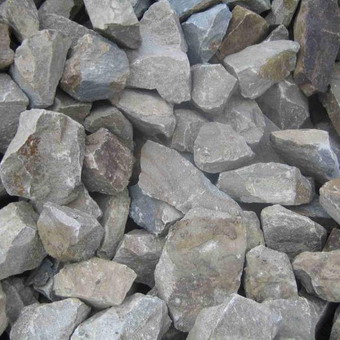
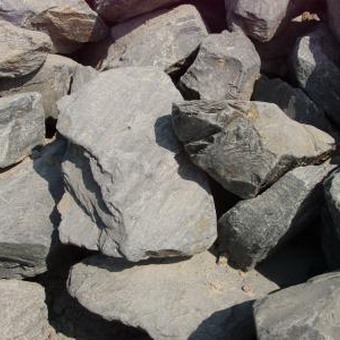
Stone fraction– this is the size natural stone, expressed in millimeters. In quarries, if they are not in the mountains, the largest stones will be blocks. What are the sizes of natural stones mined for the stone processing industry? This is a rather extensive question. They are very different. There are stone building materials, which are real monuments ranging in size from 5 to 10 cubic meters. Such natural stone materials are of considerable value due to the difficulty of extraction and transportation. They are intended for monumental monuments or architectural structures. They are also called monoliths.
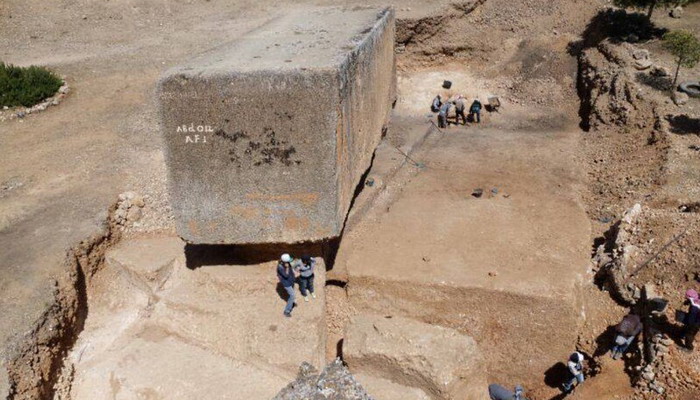
Monoliths often reach a length of 30 meters. Sometimes monolithic varieties of natural stones can be a fallen part of the rock, that is, oblong.
Types and varieties of stones for construction
Types of stones for construction measuring 2 x 1 x 1.5 meters are conventionally considered unique if they do not have cracks. They are intended for the construction of monumental structures, monuments, sculptures, decorative reliefs, monolithic columns, etc.
Types of stones for construction larger than one cubic meter are called piece stones. Their purpose is quite varied.
When talking about what types of stones there are, the names piece stone, unique stone and monumental stone are used by specialists in the stone processing industry, architects and sculptors.
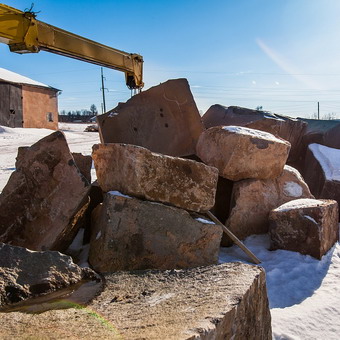

Blocks are coarse stones with ribs larger than 50-100 centimeters. As a rule, they are polyhedral, that is, polyhedral and polygonal. The lump can be quite large. What distinguishes it from a rock is that it lies on the surface of the ground. A block that does not have cracks can become a blank for one or another monument.
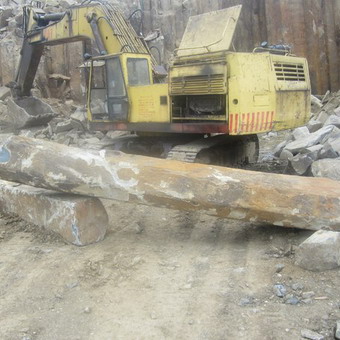
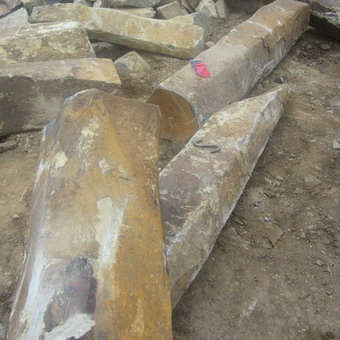
Natural stone materials in construction, such as basalt blocks on vertical pillars with five or six sides, were previously used for the manufacture of protective structures. There are also pillars - pseudomorphs, fossils, but they are an uncommon occurrence in rocks.
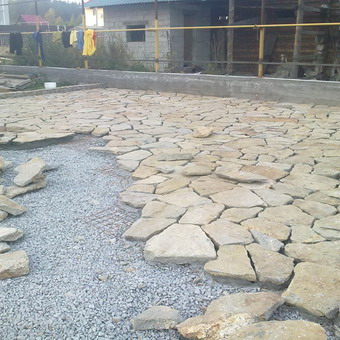

Further, somewhat aside from this list, there are stones of sedimentary rocks, which also have their own blocks (or rocks), blocks, but in most cases, due to their layered structure, they are divided into slabs, flagstone and plates. We will get acquainted with them a little later.
Quarried stones, which are smaller in size than block stones, are used to make blocks, slabs, paving stones, checkers, curb or edging stones and much more.
All the stones that remain aside from the production of such geometric stone material are rubble, gravel, (granots) or breccia - trimmings and fragments of cut slabs.
Rubble stone - what is it?


Rubble - rubble stone is also found in abundance in the mountains in the form of fragments of blocks, rocks and mountains.
Rubble is most often used in construction. So what is rubble stone, and what is its scope of application? Rubble stone (rubble) is large pieces, irregularly shaped fragments with an edge length of 150-500 millimeters. Rubble stone is distinguished by type and strength. In terms of strength, rubble stone can be: low-strength (25-100 MPa), medium-strength (150-400 MPa) and high-strength - over 500 MPa. Rubble stone is used for laying foundations, walls, retaining walls, sewer canals, hydraulic structures, for facing brick walls and for the construction of many small architectural forms.
![]()

A variety of rubble stone- (, pebble with an edge length of up to 300 mm).
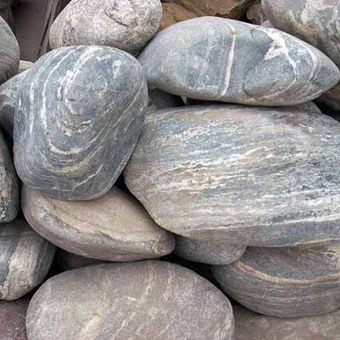
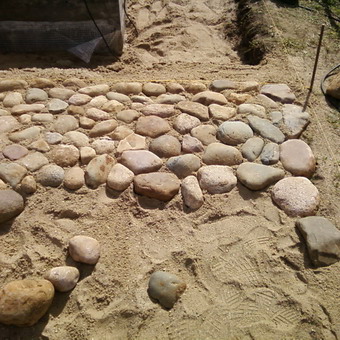
Pay attention to the photo of this building stone: the cobblestone is characterized by the fact that it has rounded sides, but at the same time it may also have some sharp edges. Sometimes it consists of parts of boulders. This stone also has a fraction of 15 to 30 centimeters, it is selected - it is selected from the beds of streams and rivers. If part of a boulder has edges measuring more than half a meter, then such a stone is sometimes called a cobblestone. Cobblestone is not yet cobblestone, but, like cobblestone, it has been used for paving roads since ancient times. Cobble stone is a product of not very long-term treatment of rubble stone with water.
Crushed stone and gravel - types of natural stones
Polygonal, multifaceted stones measuring less than 15 centimeters, or more precisely from 5 to 15 cm, are called crushed stone. It is obtained by crushing and sieving rocks, slags, etc. Natural crushed stone is called grus. Crushed stone is used as a concrete filler, ballast for railway tracks, in the construction of highways, for the formation of drainage layers, etc. In accordance with the purpose, crushed stone is subject to various requirements in terms of strength, size, grain composition, and the presence of impurities.
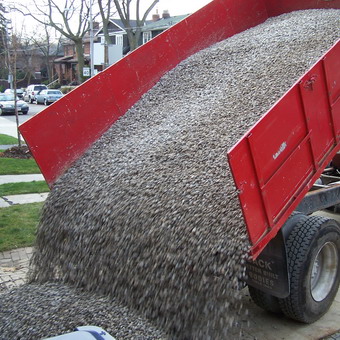
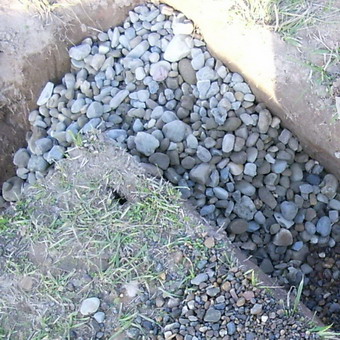
Smaller pebbles are called gravel. Gravel (from the French Gravier) is rounded rock fragments ranging in size from 1-2 to 10-20, less often 50 millimeters. Gravel is used as a concrete filler, for the construction of road pavements and ballast layers, railways, for water supply filters, return filters for hydraulic structures, etc.
Boulder is a type of stone materials
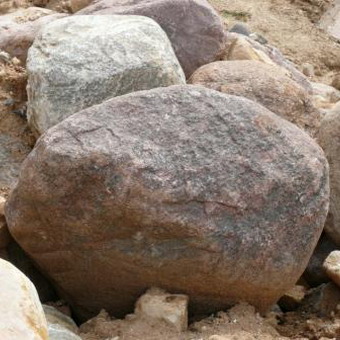

Rolled by glaciers or stormy mountain streams of rivers, or sea waves, stones become round timber - boulders, pebbles and pebbles. Round timber also includes round stones formed by other natural processes.
First, let's look at what a boulder is and how it is used in construction. A boulder is a fragment of rock, mainly granites and limestones, usually slightly rounded, ranging in size from 20 centimeters to 10 meters or more in diameter. Sometimes in the literature the initial size of a boulder is given as ten centimeters.
It should be noted that the given original dimensions of the boulders are morally outdated, so to speak in this topic. Psychologically, the size of boulders in people’s minds is associated with half-meter and more rounded stones. It is absurd, for example, to call a flat stone ground by water a boulder, even if its length is 50 centimeters. Such stones may be more likely to be associated with pebbles. A boulder can also obtain its rounded body through weathering processes. As can be seen from the characteristics of boulders, they can be of very impressive masses, like blocks.
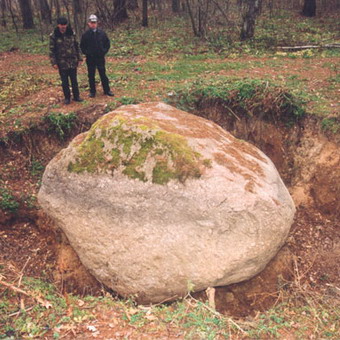

Large boulders, clearly rounded in shape, located on rocks are called tumblers.
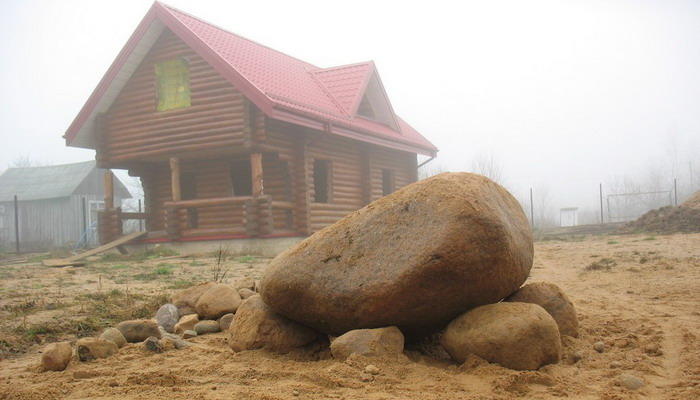
They are especially attractive when they can be swayed by human power. Pieces, fragments of smaller boulders, up to about a meter in length, as already reported, are sometimes called cobbles. A boulder can also be a separated part of a rock eroded by a river. Such a “fresh” cobblestone, as a result of being turned with water (many small pebbles, crumbs and sand rushing in the water), over time again becomes a boulder - that is, a completely rounded shape. Boulders are used in landscape design as stone dominants, that is, the central stones of a particular place in the landscape. Strong boulders of the required rocks are used in sculpture, and can also become raw materials for ornamental needs.
Pebble is a stone building material
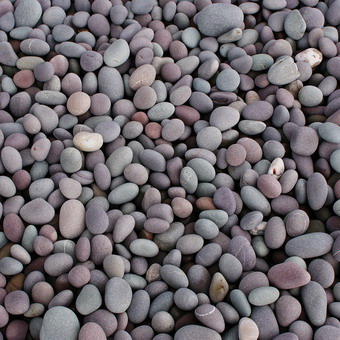

Pebble- these are fragments of solid rock of oval, spherical, ellipsoidal shapes with a diameter of 10 to 20 centimeters or more, rounded by the action of flowing water. Pebble is the result of processing stones with water in mountain streams, rivers and on sea and ocean coasts. Pebbles are always smooth unless they are split. There are many discrepancies in the definition of round stones of these sizes (fractions). Sometimes in such cases we talk about round wood, sometimes about pebble. Apparently dialects and traditions played a role here.
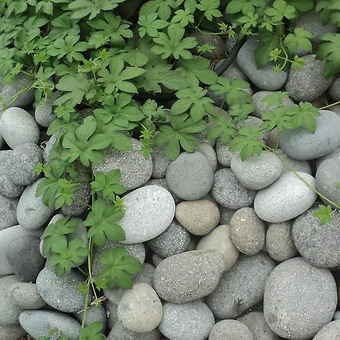

As for pebbles, this building stone is indeed a real pebble and, moreover, for some regions this is a more favorite word. However, if you look at the essence of the name, then pebbles are sometimes rightfully defined as pebbles, and not pebbles. His name speaks for itself, he is naked. It turns out like this: bare pebbles are pebbles. Naked naked from the so-called “shirt”. The skin of the stones is their faded color, which is the result of lying on land under the sun - that is, fading. The faded, faded outer layer of boulders and pebbles ranges from a millimeter to several millimeters in thickness. A stone that is constantly or often in water does not lose its original color; it is constantly polished with water and grains of sand.
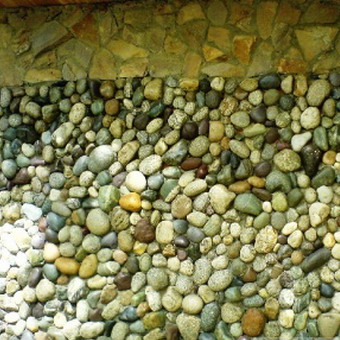
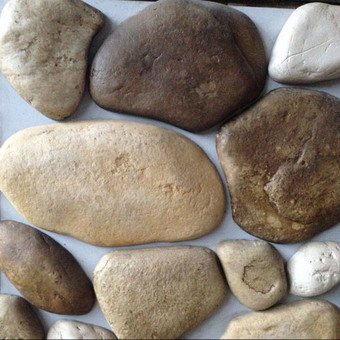
Pebble is used mainly as a decorative facing stone material. With appropriate preparation, blind areas, bridges, small architectural forms, etc. are made from pebbles.
Pebbles are a type of building stones
Pebbles- these are fragments of solid rock of an oval, spherical or ovoid shape, with a diameter of 1 to 10 centimeters, rounded by the action of flowing water (rivers, streams, mountain and glacial streams or sea coastal waves). Speaking about what pebbles are, it should be noted that sea pebbles, on average, have a flatter shape than river pebbles. Flat pebbles are also called flat pebbles. Such pebbles are used in decorative cladding of small architectural forms and in mosaics. Non-flat pebbles are also used in cladding, drainage layers and combined masonry.
Look at the photo to see what pebbles are and how they are used in construction:

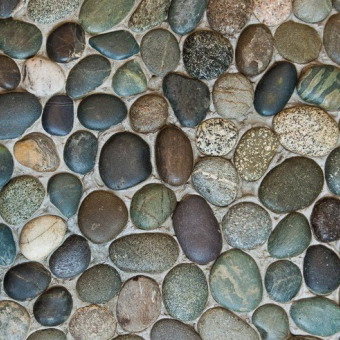


What types of round stones are there and their photos
You can get acquainted with a number of unusual round stones that are found in nature, but due to their rarity, are not used in traditional construction.
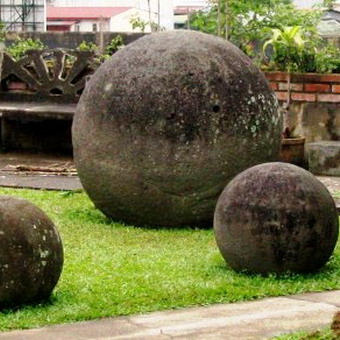
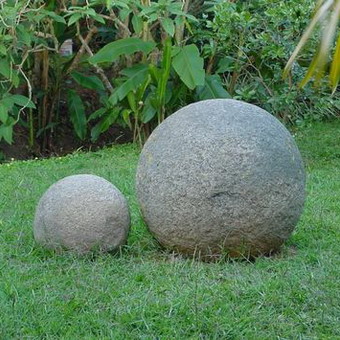
First of all, this stone balls almost ideal forms. These balls are a mystery of nature; they come in different sizes and at least three types: sandstone, obsidian and granite. Such unsolved stone finds become exhibits in museums and national reserves.
![]()

Another type of stone rounded bodies are the so-called “netsuke” in geology, named after Japanese and Chinese miniature figurines. Netsuke are lumpy formations of sedimentary rocks that are essentially casts of gas cavities in soft rocks. Over time, they harden and very remarkable stone bodies appear, reminiscent of abstract plastic figures.
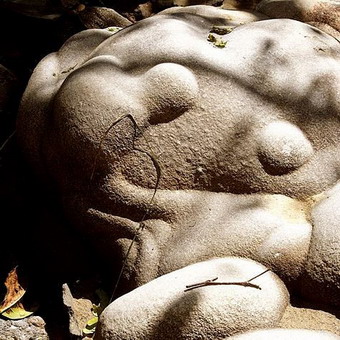
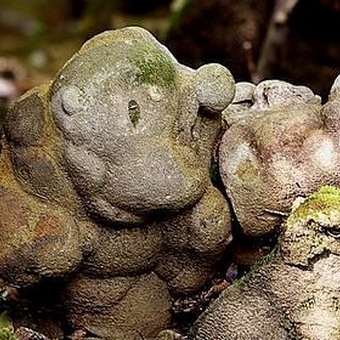
Such stones become decorations of landscapes, parks, and gardens.
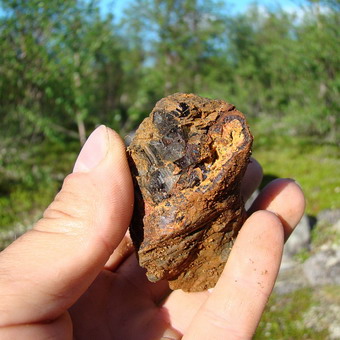

Like netsuke, various nodules are formed in soft rocks, made of feldspar or quartz-feldspathic aggregates, phosphorites and other similar minerals. The nodules have a variety of rounded shapes. The size of the nodules is small, but netsuke can be more than a meter in diameter.

So-called volcanic bombs are formed in a completely different way. They have a wide variety of round, rough bodies made of solidified lava. Lava flying out of volcanic craters rotates in the air like twisted tops, thanks to which it manages to harden significantly in flight. When volcanic bombs fall onto the ground, they break or become deformed, often remaining round, rough stones. Lava that falls into water tends to form pillow-like shapes. And on Hawaiian Islands volcanic lava forms completely exotic formations called “pahoechoe”. They are shapes resembling coils of ropes or pieces of rope. This occurs because the lava slowly slides down the gentle slopes of the volcano and at the same time cools and twists like rolls of matter.
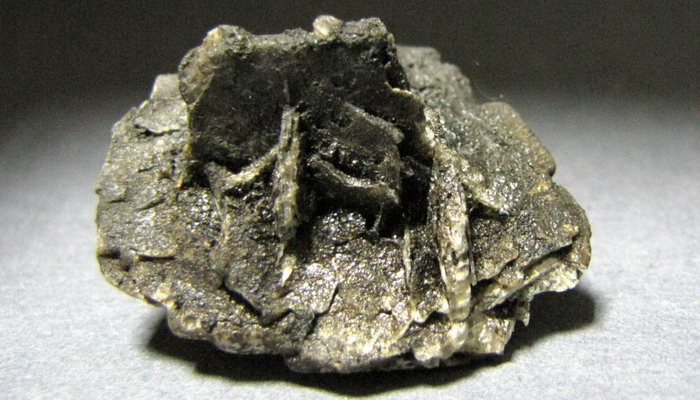
Small solidified lava stones are called lapilli. They come in both round shapes and torn pieces of lava. Among the smallest rounded stones, rarely found in nature, are the so-called spherulites. They are similar to pearls, but do not have a pearl-like shine. Spherulites are formed from calcite dripping from the ceilings of caves into puddles. This same calcite, carried by groundwater, gradually forms the well-known stalactites and stalagmites in caves. Stalactites and stalagmites accreting together form so-called stalagnates, similar to stone trunks.
Types of natural stone materials, their classification and properties
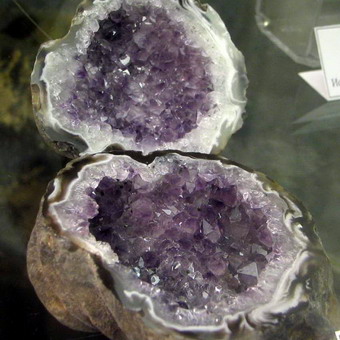
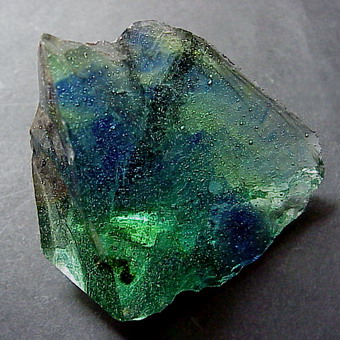
Speaking about the classification of stone materials, one cannot fail to mention gems, geodes with chalcedony, eltysh (roundish stones found separately on overgrown soil), meteorites, fossils, concretions and, for example, tektites, which captivate with their beauty and surprise with their shapes.
Small particles settling at the bottom of rivers and lakes, seas and oceans form new stones - rocks of sedimentary origin. Some rocks of sedimentary origin appear due to the life of certain microorganisms. As they settle in layers, they form layers of sedimentary rocks. The lower such layers sink, the harder they become. As a result, new stone materials appear. And they are interesting in terms of their shapes.
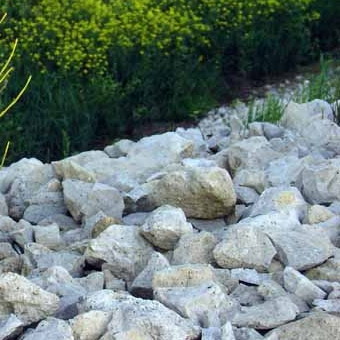
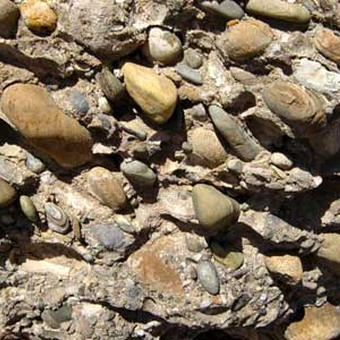

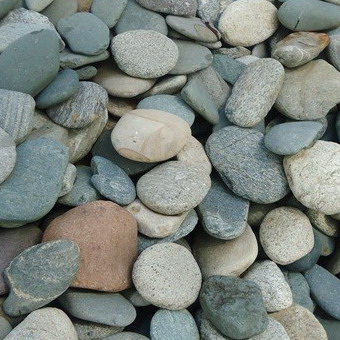
Sedimentary rocks give us their blocks, blocks, boulders. All coarse stones of sedimentary rocks become rubble, crushed stone, gravel or boulders, cobblestones, pebbles, pebbles if they are subject to natural treatment with water. Sedimentary rocks, which individually have smaller layers, give us slabs, flagstones and plates.
Natural (natural) stone materials in construction
Stone slabs can be of different thicknesses. The well-known ancient dolmens are made of slabs up to forty centimeters thick. Broken thinner strata or slabs yield both block stone and bed stone, or flagstone and flakes.

![]()
Block natural stone characterized by more or less even sides and parallelepiped-like appearance. The dimensions of such a stone vary along the edges from 10 to 100 centimeters. Larger stones are already known to us as blocks. A block stone is always bedded, which means that any two opposite sides of it are approximately parallel and even. In block stone, in most cases, all opposite sides are smooth and relatively parallel. The flatness of a stone is its ability to “creep”, that is, to lay stably due to its shape. Block stone is an excellent material for construction.
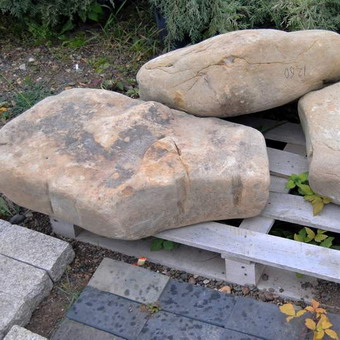

Bedstone differs from block in that it has, as a rule, only two even parallel sides, so it looks like fragments of slabs. Thanks to the chipping, bedded stone can become a block, so it is a good stone material for construction.
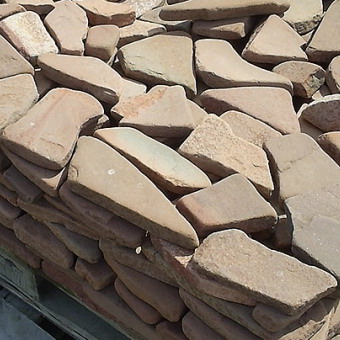
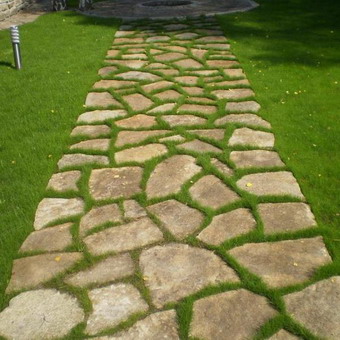
Flagstone characterized by its absolute similarity to fragments of thin stone slabs. The thickness of the flagstone is from one centimeter to five to ten centimeters. This type of stone, with its flat sides, shows certain irregular polygonal shapes. Flagstone is an excellent material for cladding walls, blind areas and steps.


Plates is a thin stone material whose name speaks for itself. The thickness of the plates is less than one centimeter. The plates are convenient for cladding walls, ceilings, and in a set of mosaic patterns and panels.


Sedimentary rocks produce not only slabs, flagstone, bedded stone and plates, but also the above-described blocks, rubble, crushed stone, gravel and various round timber, but not only that. When exposed to groundwater, sedimentary rocks, primarily limestone, produce the so-called karst stone.

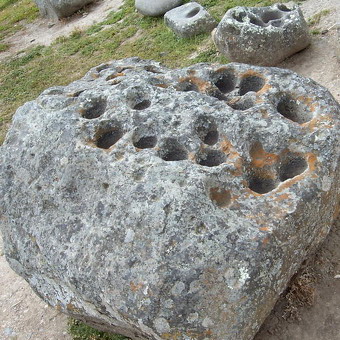
Karst stone characterized by the massive presence of holes and gouges in its forms. This is a kind of fragile decorative stone material.
What are the types and varieties of natural stones (table)
A general table of varieties of natural stones suitable for construction may look like this:
|
Name |
Dimensions |
Main characteristics |
Application |
| Blocks | More than 10 cubic meters | Has relatively rectangular shapes and approximately parallel sides | In foundations, cyclopean masonry, monumental monuments and in the stone processing industry |
| Monumental stones | From 5 to 10 m3 | Manufacturing of monuments, sculptures, steles, columns, ceilings | |
| Unique stones | From 2x 1 x 1.5 meters | Have no cracks. They are distinguished by durability and decorative colors | Manufacturing of monuments, sculptures, steles, columns, squares, slabs. Use in cyclopean masonry |
| Piece stones | More than 1 m3 | Have no cracks. They are distinguished by the durability of the rocks and decorative colors | Production of memorial stones, sculptures, quadrigas, vases, bowls, etc., as well as blocks, cobblestones, side and curb stones |
| Lumps | From 50 cm to 10 meters or more | They have irregular shapes, many edges, sometimes with cracks | Large blocks sometimes serve as raw materials for the stone processing industry and for monuments. Small blocks are used in foundations, large masonry and landscape design |
| Pillars | Up to several meters | They have relatively smooth sides, sometimes 5-6 edges | Used as raw material for block stone, etc. |
| Boulders | From 20 cm to 10 m in length | Have rounded shapes | Used as raw material for sculptures and landscape design |
| Plates | Thickness 10 cm or more | Characterized by the presence of two relatively smooth and parallel sides | Purely exclusive. Can be used as raw material for the stone processing industry |
| Booth | From 15 to 50 cm | Sponge-clastic stone material | In laying foundations, walls, small architectural forms |
| Flagstone | Slab thickness from 1 to 10 cm | Durable fragments of thin stone slabs | Cladding of walls, blind areas, steps. Laying retaining walls, fences and pillars |
| Pebble | From 10 to 20 cm | Rock fragments of oval, spherical, ellipsoidal shapes with a smooth surface | Cladding of walls, pillars, fences, pools and blind areas. Construction of small architectural forms |
| Crushed stone, debris | From 5 to 15 cm | Angular small stones | In rubble masonry, in drainage layers, in concrete as a filler |
| Gravel | Up to 50 mm | Small rock fragments | Used as concrete filler, in road embankments, in drainage layers, etc. |
| Pebbles | From 1 to 10 cm | Has an oval, spherical or ovoid shape | In decorative cladding, drainage layers and as concrete filler |
| Plates | Thickness from 1 to 10mm | Thin, brittle stone fragments | In exclusive cladding, mosaics and stained glass |
NATURAL STONE MATERIALS.
Natural stone materials are materials and products obtained by mechanical processing (crushing, splitting, sawing, etc.) of rocks.
Natural stone, along with wood, was the first building material used by man. From the depths of centuries came architectural monuments built from natural stone: one of ancient buildings Stonehenge in England, pyramids in Egypt, temples Ancient Greece. Medieval castles and temples built of natural stone are to be found in every country.
Natural stone, used directly as a building material, attracts with its decorativeness and durability.
Architects of the 18th and 19th centuries used it as cladding; all the royal chambers were lined with rhodonite and malachite brought from the Urals. The high durability of natural stone materials makes them indispensable for hydraulic structures, road and bridge construction, and in many other cases. When it is necessary to ensure high durability of a structure.
Porous stones, such as shell rock or volcanic tuff, are very effective as a local material for the construction of walls, instead of brick and other artificial wall materials, since the energy costs for their extraction are incomparably less than firing bricks or making concrete panels and blocks (including production cement and reinforcement).
Natural stone materials also play the role of raw materials: they are used in ceramics, in the manufacture of glass, in the production of Portland cement and other binders. Huge amounts of sand, gravel and crushed stone are used to prepare concrete and mortars as aggregate.
The total share of construction costs for these materials, called “non-metallic materials,” exceeds 20%.
It is advisable to begin acquaintance with natural stone materials by studying the properties of the main rocks and minerals.
Rock is a natural mineral aggregate consisting of one mineral (monomineral rock) or several minerals (polymineral rock)
Mineral(from lat. minera– ore) is a physically and chemically homogeneous substance formed as a result of complex physical and mechanical processes on the surface and in the depths of the earth.
More than 3 thousand minerals have been found in nature, but only a few of them form large clusters; Such minerals are called rock-forming minerals.
CLASSIFICATION OF NATURAL STONE MATERIALS.
In order to more easily understand the diversity of rocks and identify the reasons for the difference in their properties, it is advisable to use the classification of rocks, which is based on their origin (genesis). The principles of such a classification were also proposed, and in modern form it was modified by Russian scientists - Lessing, etc.
Genetic classification of rocks takes into account the conditions of their formation, which predetermine the structure and, consequently, the properties of the rocks. Natural stone materials are divided into three groups based on their origin.
Igneous |
Sedimentary |
Metamorphic |
||||
|
Massive |
Clastic |
Chemical precipitation |
Organogenic deposits |
Fur precipitation |
Product of recrystallization of magma. breeds |
Product of recrystallization of sedimentary rocks |
|
Deep Granite, syenite, gabbro |
Poured out Porphyry, basalt. |
Volcanic ash, pumice, tuff. |
Gypsum, lime. |
Chalk, shell rock, diatomite, tripoli, opoka. |
Sand, gravel, clay Cemented CaO × Al2O3 and the hardening feature of alumina cement is its hardening only at moderate temperatures not higher than 250C When alumina cement hardens, the following reactions occur: 2(CaO × Al2O3) + 11H2O = 2CaO× Al2O3× 8H2O+ 2Al(OH)3 the resulting calcium hydroaluminate gives strength to alumina cement. Properties. The grade of alumina cement is determined in the same way as ordinary Portland cement, but not at 28 days of age, but at 3 days of age, since alumina cement hardens very quickly. Brands M400, M500 and M600. The setting time is the same as for ordinary Portland cement. Heat generation is 1.5 times higher than that of ordinary Portland cement. A feature of aluminous cement is its increased heat resistance up to 15000C. Alumina cement has good resistance to type 1 corrosion and magnesium corrosion, but does not withstand acids and alkalis. Application. Aluminous cement is used for fast-hardening and heat-resistant concrete and mortars. Expanding and non-shrinking cements are made based on alumina cement, which are used for |



